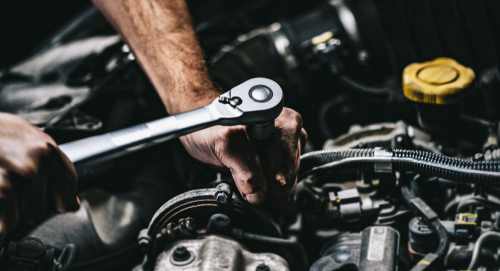Step-by-Step Guide to Replacing Tractor Tires
Tractor tires are essential components of agricultural machinery, providing traction, stability, and support for various farming tasks. Over time, tractor tires may wear out or sustain damage, necessitating replacement to ensure optimal performance and safety. While replacing tractor tires may seem daunting, following a step-by-step guide can simplify the process and help you complete the task efficiently. In this article, we’ll provide a comprehensive tractor tire replacement guide and walk you through the process of changing tractor tires, whether you’re a farmer in Sheridan Lake, Colorado, or anywhere else.
Assessing Tire Condition
Before replacing tractor tires, it’s essential to assess their condition and determine whether replacement is necessary. Look for signs of wear, such as tread depth, sidewall damage, bulges, cracks, or punctures. Additionally, check tire pressure and inflation levels to ensure they meet manufacturer specifications. If tires show significant wear or damage, it’s time for replacement.
Gathering Necessary Tools and Materials
To replace tractor tires, gather the following tools and materials:
Tools:
- Jack
- Lug wrench
- Tire iron
- Pry bar
- Tire gauge
Materials:
- Replacement tires
- Tire lubricant or soap solution
- Tire valve stems
- Valve stem core tool
- Rim protectors (optional)
Removing the Old Tire
- Safety Precautions: Park the tractor on a level surface, engage the parking brake, and turn off the engine. Place wheel chocks behind the rear wheels to prevent movement.
- Loosening Lug Nuts: Use a lug wrench to loosen the lug nuts on the wheel hub.
- Raising the Tractor: Position a hydraulic jack under the axle housing or frame near the tire you’re replacing. Carefully lift the tractor until the tire is off the ground.
- Removing the Lug Nuts: Fully remove the lug nuts and set them aside in a safe place.
- Breaking the Bead: Use a tire iron or pry bar to break the bead seal between the tire and the rim. Work your way around the tire to loosen it from the rim.
Installing the New Tire
- Applying Lubricant: Apply a liberal amount of tire lubricant or soap solution to the tire bead and rim to ease installation.
- Positioning the Tire: Align the new tire with the rim, ensuring that the valve stem aligns with the valve hole in the rim.
- Mounting the Tire: Use a tire iron or pry bar to gradually work the tire onto the rim, starting from the opposite side of the valve stem. Take care not to pinch the tire tube or damage the rim.
- Inflating the Tire: Inflate the tire to the recommended pressure using a tire gauge and air compressor. Check the manufacturer’s specifications for proper inflation levels.
- Seating the Bead: Inflate the tire until the bead seats securely against the rim. You may hear a popping sound as the bead snaps into place.
- Checking for Leaks: Spray soapy water onto the tire bead and valve stem to check for leaks. If bubbles form, the tire may not be seated correctly, or the valve stem may be leaking.
Reattaching the Wheel
- Lowering the Tractor: Carefully lower the tractor back onto the ground using the hydraulic jack.
- Tightening Lug Nuts: Reattach the lug nuts to the wheel hub and tighten them securely using a lug wrench. Follow a star pattern to ensure even tightening.
- Testing the Tire: Test the newly installed tire by driving the tractor at low speeds in a safe area. Listen for unusual noises and monitor tire pressure to ensure proper seating and inflation.
Conclusion
Replacing tractor tires is a manageable task that can be completed with basic tools and equipment. By following this step-by-step guide, you can confidently change tractor tires and maintain your agricultural equipment’s performance and safety. Whether you’re a farmer in Sheridan Lake, Colorado, or elsewhere, regular tire maintenance and replacement are essential for ensuring optimal traction, stability, and efficiency in your farming operations. Remember to prioritize safety and consult manufacturer guidelines for specific tire replacement procedures. With proper care and maintenance, your tractor tires will continue to support your farming activities for years to come.


